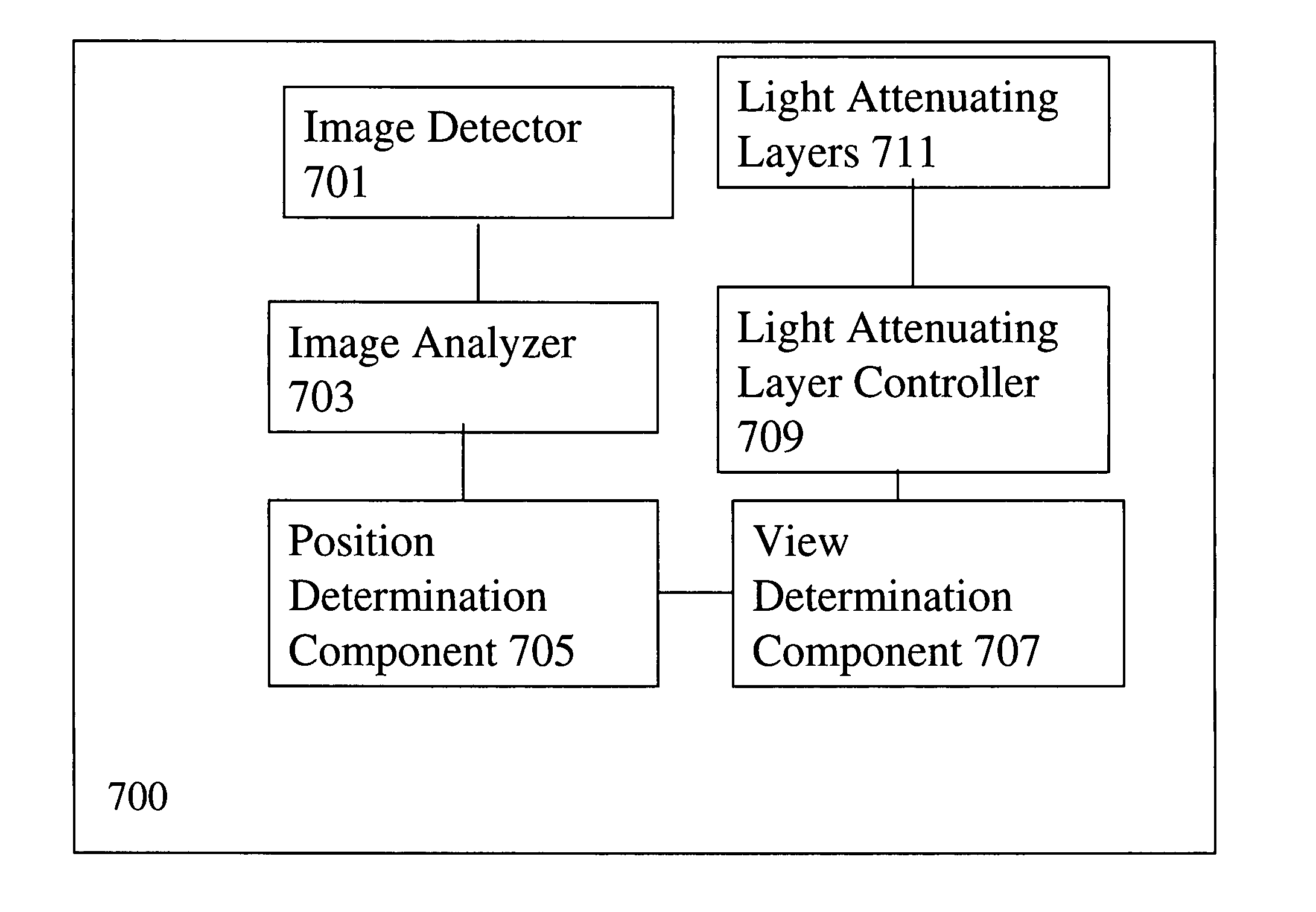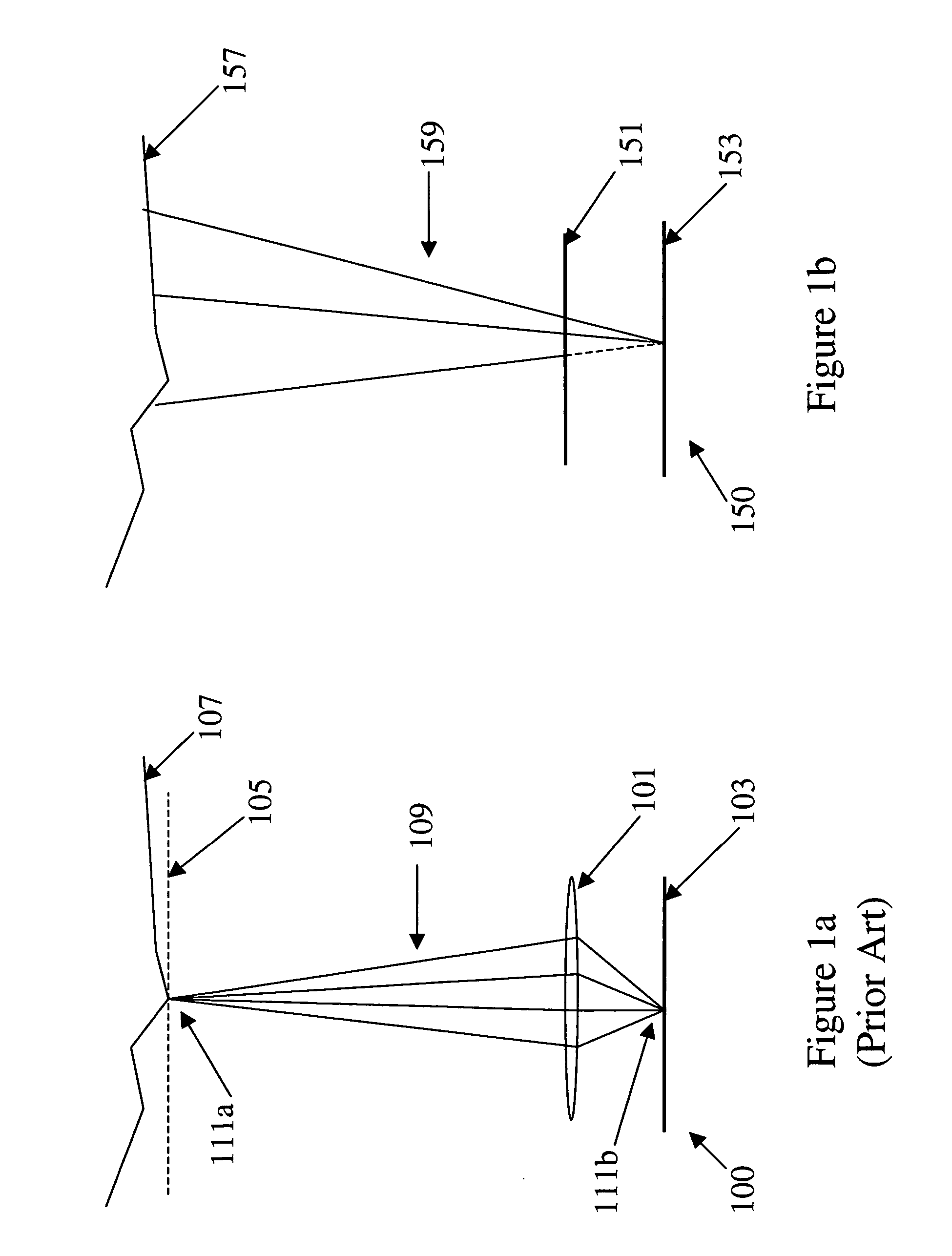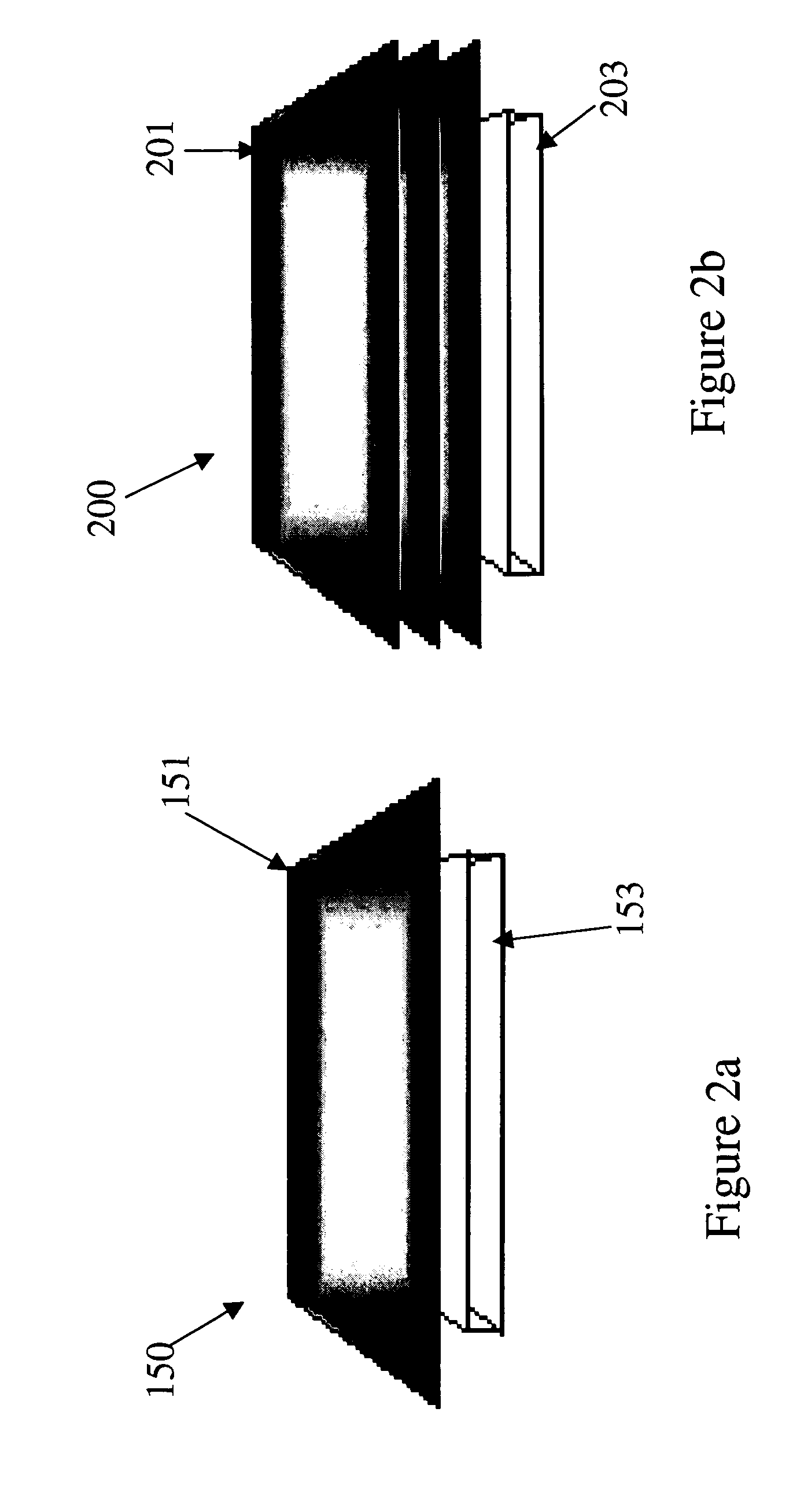Lensless imaging with controllable apertures
a technology of controllable apertures and lensless imaging, which is applied in the field of lensless imaging, can solve the problems of limited control of the geometry and photometry of the imaging process, limited mechanical constraints of the motor, and large mechanical constraints of the motor, and achieves the effect of high flexibility
- Summary
- Abstract
- Description
- Claims
- Application Information
AI Technical Summary
Benefits of technology
Problems solved by technology
Method used
Image
Examples
Embodiment Construction
, including the description of various embodiments of the invention, will be best understood when read in reference to the accompanying figures wherein:
[0022]FIG. 1a is a cross-sectional view illustrating a conventional ideal lens camera;
[0023]FIG. 1b is a cross-sectional view of a lensless imaging device according to various embodiments of the present invention;
[0024]FIG. 2a is a side view of the device illustrated in FIG. 1b;
[0025]FIG. 2b is a side view of another lensless imaging device according to various embodiments of the present invention;
[0026]FIG. 3 is a side view of yet another lensless imaging device according to various embodiments of the present invention;
[0027]FIG. 4 illustrates a patch taken from an acquired image that would be produced in certain embodiments of the present invention;
[0028]FIG. 5 is a diagram illustrating a prototype implementation of a lensless imaging device according to various embodiments of the present invention;
[0029]FIG. 6a is a diagram...
PUM
 Login to View More
Login to View More Abstract
Description
Claims
Application Information
 Login to View More
Login to View More - R&D
- Intellectual Property
- Life Sciences
- Materials
- Tech Scout
- Unparalleled Data Quality
- Higher Quality Content
- 60% Fewer Hallucinations
Browse by: Latest US Patents, China's latest patents, Technical Efficacy Thesaurus, Application Domain, Technology Topic, Popular Technical Reports.
© 2025 PatSnap. All rights reserved.Legal|Privacy policy|Modern Slavery Act Transparency Statement|Sitemap|About US| Contact US: help@patsnap.com



